John Dilatush's Pietenpol
John Dilatush's Subaru-Powered Pietenpol
revised August 7, 2004... added pix of the crash, at "Wounded Piet" page
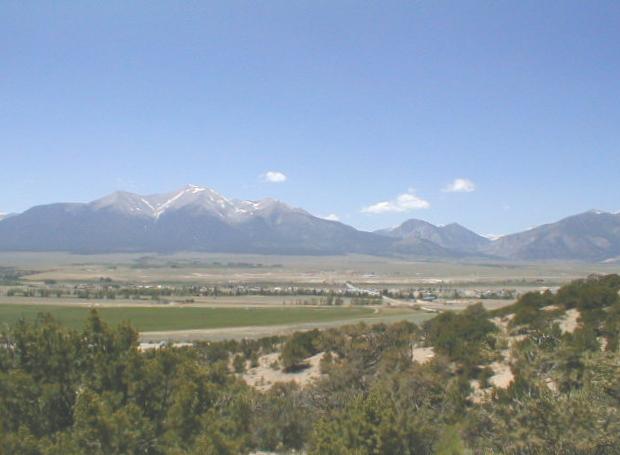
This is a beautiful Rocky Mountain valley north of Salida, Colorado. "Salida" means "exit" in Spanish, and in this case Salida is the western exit from the Arkansas River canyon and the Royal Gorge. Down in this little valley is the town of Buena Vista and the Central Colorado Regional Airport, field elevation 7,946' MSL. The day this photo was taken the temperature was about 80F which with an altimeter setting of 29.92" and a dewpoint of about 45F yields a density altitude of about 11,100 ft. Now how well is a Ford 'A' powered Pietenpol going to do in that kind of environment? Here's one man's solution to that problem...
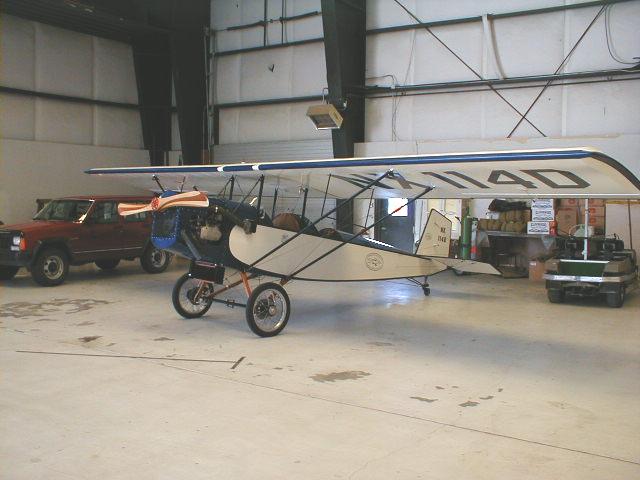
This is a beautiful, straight-axle, stock, 1929-plans-built Pietenpol Air Camper by John Dilatush of Salida, Colorado. It has the 3-piece wing, as evidenced by the cover strips between the center section and outer wing panels. Stock except for the engine... and that's what this story is all about. But before we go any further, just forget about how the airplane's nose and cowling look. There is a reason for that bluff, squared-off nose.
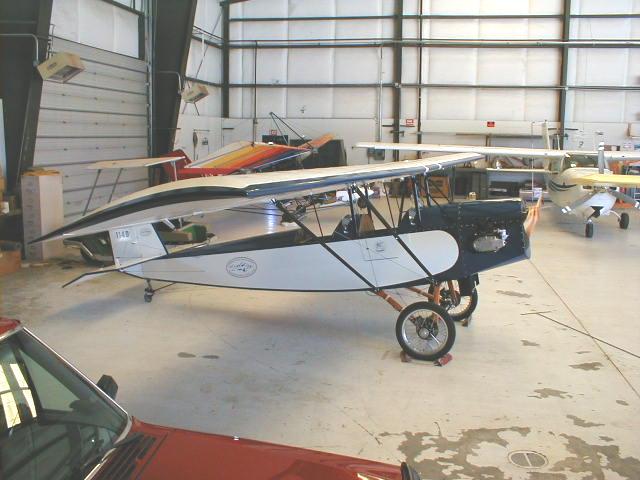 Here's the starboard side of the airplane... just as clean as the port side. Just a hint of dihedral in the wing. Vertical cabanes (which means John did the weight and balance and engine mount calculations very carefully), low turtledeck. Hmmm... let's zoom in on that front cockpit...
Here's the starboard side of the airplane... just as clean as the port side. Just a hint of dihedral in the wing. Vertical cabanes (which means John did the weight and balance and engine mount calculations very carefully), low turtledeck. Hmmm... let's zoom in on that front cockpit...
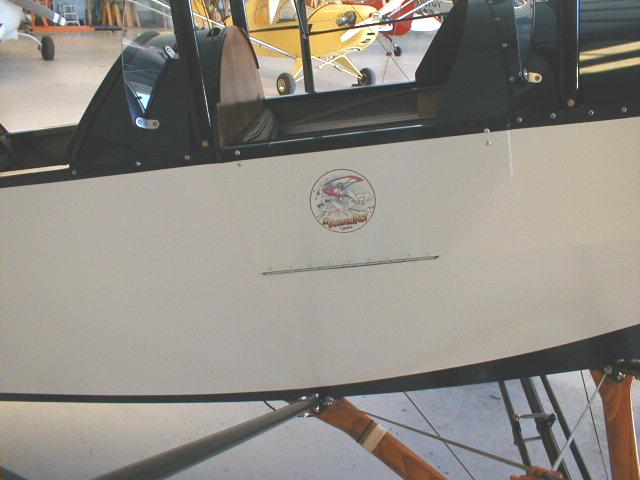 A passenger's side door! One of the peculiarities of the front cockpit of a Pietenpol is the contortions required for a passenger to get into and out of the front 'pit, and it's usually done from the port side. On John's Piet, with no X-bracing of the cabane struts and with the drop-down door here, it's far less of a gymnastic routine to get in and out. Nice artwork, too... it shows "Mountain Piet" huffing and puffing to get over the Rockies. Also visible in this shot are the two links that tie the main gear axle to a fixed tube to keep the axle from rotating when the brakes are applied but still allow vertical motion of the axle as the bungees flex and the plane rides over bumps on the ground.
A passenger's side door! One of the peculiarities of the front cockpit of a Pietenpol is the contortions required for a passenger to get into and out of the front 'pit, and it's usually done from the port side. On John's Piet, with no X-bracing of the cabane struts and with the drop-down door here, it's far less of a gymnastic routine to get in and out. Nice artwork, too... it shows "Mountain Piet" huffing and puffing to get over the Rockies. Also visible in this shot are the two links that tie the main gear axle to a fixed tube to keep the axle from rotating when the brakes are applied but still allow vertical motion of the axle as the bungees flex and the plane rides over bumps on the ground.
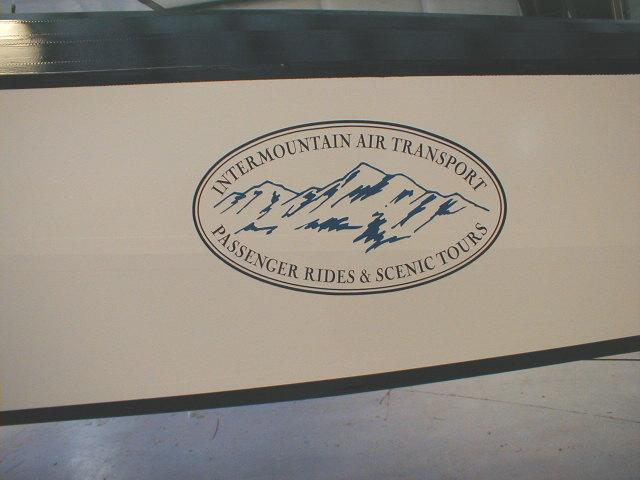 Here's the logo on the fuselage sides.
Here's the logo on the fuselage sides.
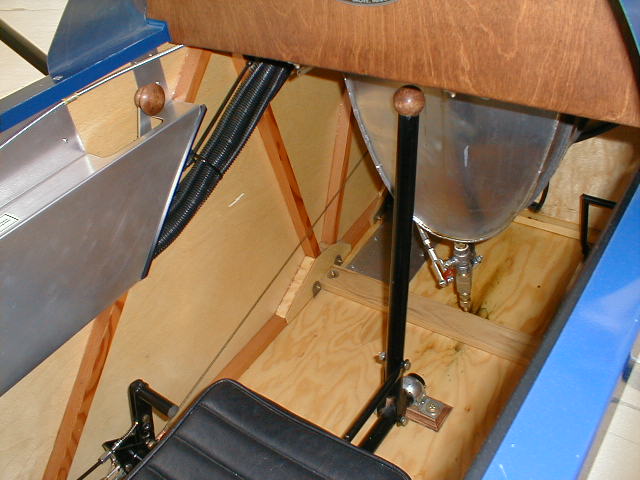 Here's the front cockpit, characteristically simple. The airplane has an aux tank in the wing but this is the main tank. Very simple and clean upholstery, immaculate finish on the woodwork, absolutely no gauges on the front panel, a nice aluminum cover on the throttle linkages, toe brakes on the rudder bar for the pilot's rudder controls, and... not much else. This is basic stick-and-rudder flying at its best. Now let's look at the main office.
Here's the front cockpit, characteristically simple. The airplane has an aux tank in the wing but this is the main tank. Very simple and clean upholstery, immaculate finish on the woodwork, absolutely no gauges on the front panel, a nice aluminum cover on the throttle linkages, toe brakes on the rudder bar for the pilot's rudder controls, and... not much else. This is basic stick-and-rudder flying at its best. Now let's look at the main office.
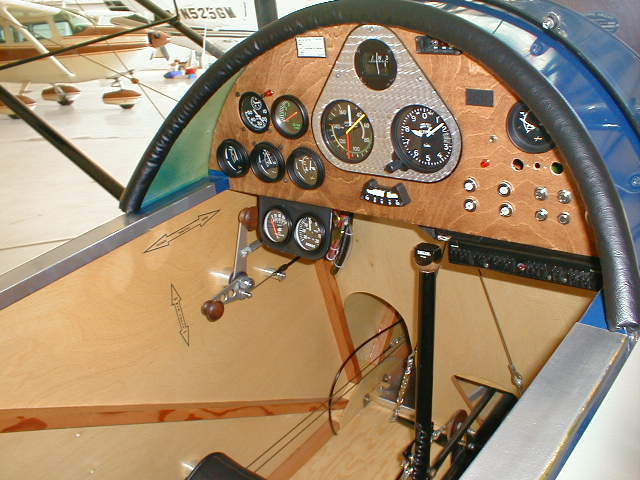
Not much out of the ordinary here, is there? But wait! What is that funny lever below the throttle? Here's a hint: the placarded up/down arrow says "man. press.". This is a manual wastegate control for the turbocharger on the Subaru EA-82 and this is what gives "Mountain Piet" its muscle. And what's that funny black box under the right side of the panel? No, it's not a transponder; it's the engine control module, aka "computer". The pin-outs, connections, and modifications needed for this aero conversion are all well documented in back issues of Contact! in articles by Don Parham and others. John has proven that if we can put men on the moon, we can sure figure out how to make a 4-cylinder auto engine work in an airplane! Oh, one more thing to note: see the altimeter reading? Sitting on the ground? Yes, this is high country!
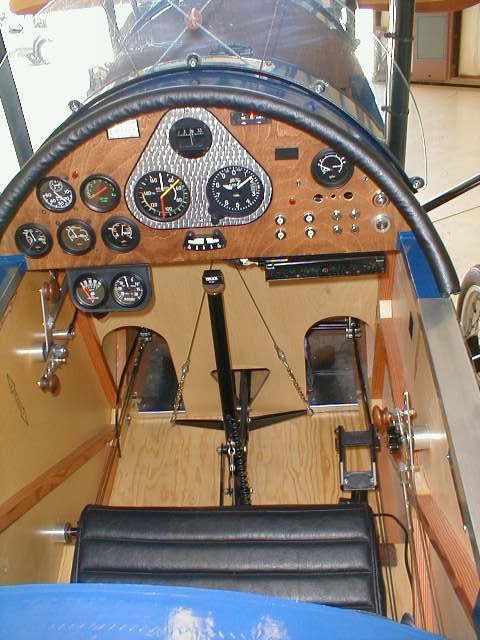
The front cockpit, from a different angle. The cutouts for the pilot's feet are pretty much stock... somewhat smaller than most builders choose to make them to make it easier to climb in and out. Bracket for handheld radio down to the right side. And an extra lever and knob on the right side of the cockpit. We'll talk about that extra lever (the one with the wooden handle) in a moment, but the black knob is the tension control for elevator trim on that bellcrank.
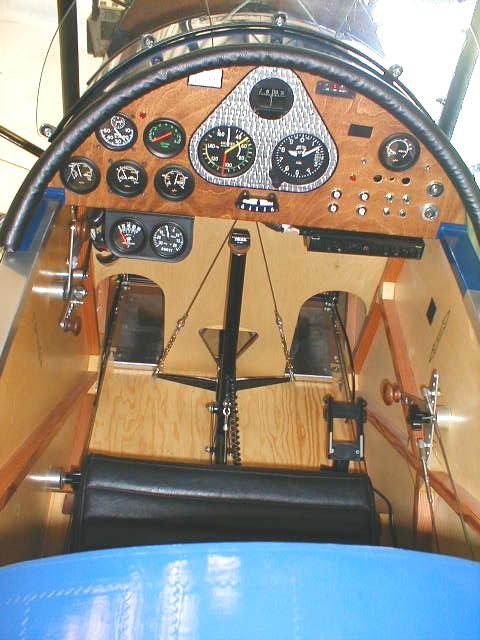 One more shot of the office. Vne on John's plane shows to be 105 MPH with bottom of the green at 50. Check the detail work on the coamings, the windscreens, the metal scuff plates at the pilot's heels and on the top longerons where the pilot climbs in and out. Sanitary.
One more shot of the office. Vne on John's plane shows to be 105 MPH with bottom of the green at 50. Check the detail work on the coamings, the windscreens, the metal scuff plates at the pilot's heels and on the top longerons where the pilot climbs in and out. Sanitary.
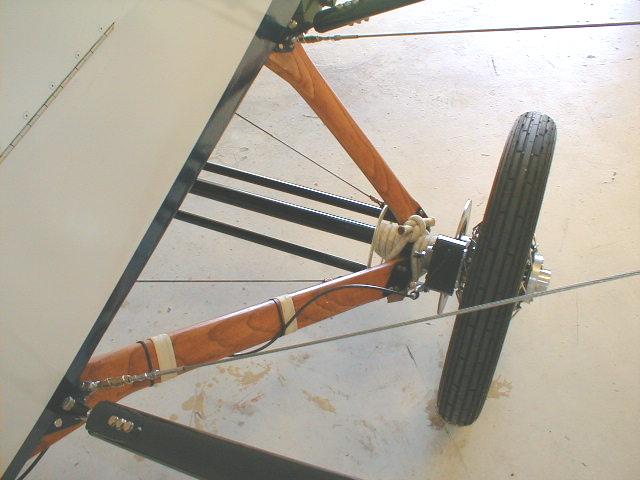 Here's the main gear. Straight axle with bungee suspension, mechanical disk brakes, and motorcycle tires.
Here's the main gear. Straight axle with bungee suspension, mechanical disk brakes, and motorcycle tires.
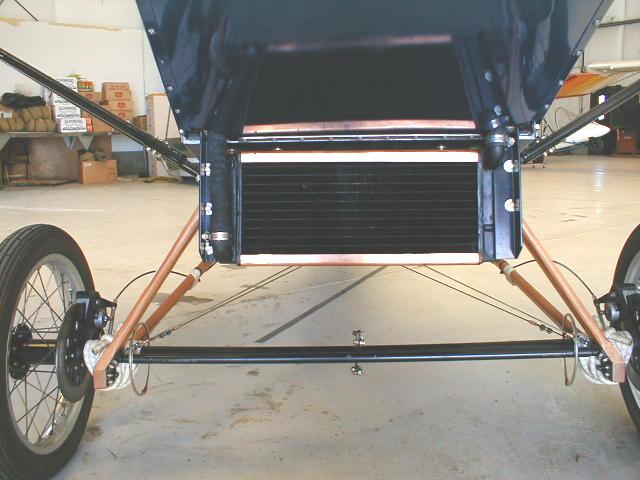 A better shot of the main gear showing the torque tube with two links to the axle to keep the axle from rotating when brakes are applied. Safety cables secure the axle if the bungees go south. And, of course, the radiator for the water-cooled EA-82. What's that they say in Pietenpol circles, "real FBOs carry antifreeze"?
A better shot of the main gear showing the torque tube with two links to the axle to keep the axle from rotating when brakes are applied. Safety cables secure the axle if the bungees go south. And, of course, the radiator for the water-cooled EA-82. What's that they say in Pietenpol circles, "real FBOs carry antifreeze"?
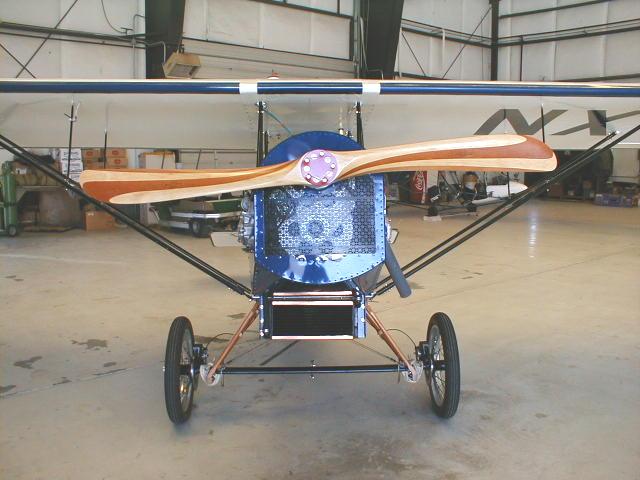 Let's take a closer look at the front end of this bluff-nosed bird! Most obvious here is the prop, which John hand-carved from two Southern Ute Indian canoe paddles (just kidding about the canoe paddles, but John did make the prop himself). John wanted to turn a wood prop the same RPM as the Ford 'A' Piets so the prop, redrive, and operating envelope are all based on retaining the original Piet speeds and RPMs. Behind the screened intake on the nose of the Mountain Piet lurks the belt redrive that John designed and built himself. Remember that the Subaru is water-cooled, so the cowling and intake didn't need to be built with cooling air intake in mind... John did a good job of enclosing the redrive while still creating an antique/classic airplane appearance this way. And drag is not an issue with the Pietenpol, since speed is not the objective ;o)
Let's take a closer look at the front end of this bluff-nosed bird! Most obvious here is the prop, which John hand-carved from two Southern Ute Indian canoe paddles (just kidding about the canoe paddles, but John did make the prop himself). John wanted to turn a wood prop the same RPM as the Ford 'A' Piets so the prop, redrive, and operating envelope are all based on retaining the original Piet speeds and RPMs. Behind the screened intake on the nose of the Mountain Piet lurks the belt redrive that John designed and built himself. Remember that the Subaru is water-cooled, so the cowling and intake didn't need to be built with cooling air intake in mind... John did a good job of enclosing the redrive while still creating an antique/classic airplane appearance this way. And drag is not an issue with the Pietenpol, since speed is not the objective ;o)
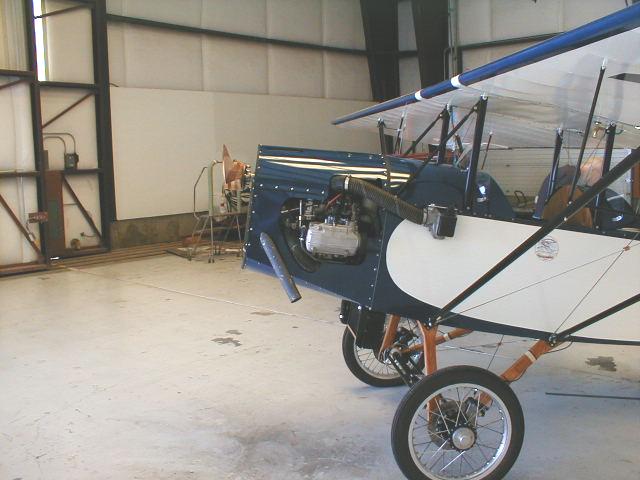 Port side of the engine cowl showing the big exhaust out of the turbocharger, as well as that intriguing intake along the side of the fuselage. Engine thrustline was moved a bit off of the top of the top longeron, based on knowledge of typical Piet behavior when the power is backed off.
Port side of the engine cowl showing the big exhaust out of the turbocharger, as well as that intriguing intake along the side of the fuselage. Engine thrustline was moved a bit off of the top of the top longeron, based on knowledge of typical Piet behavior when the power is backed off.
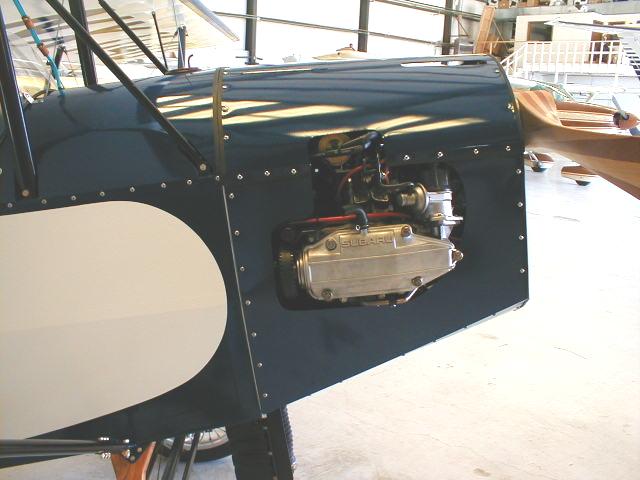 Starboard side of cowl... simple and clean. Note thrustline slightly above top of the top longeron/cowling part line.
Starboard side of cowl... simple and clean. Note thrustline slightly above top of the top longeron/cowling part line.
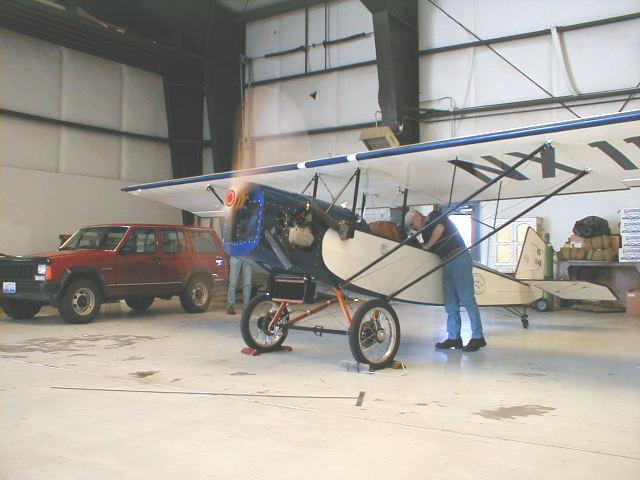 Engine runup! John fired up the beast and lifted the tail with a quick blip of the throttle. The engine started instantly, idled as smooth as butterscotch pudding, and the overall sound was very pleasing to the ear.
Engine runup! John fired up the beast and lifted the tail with a quick blip of the throttle. The engine started instantly, idled as smooth as butterscotch pudding, and the overall sound was very pleasing to the ear.
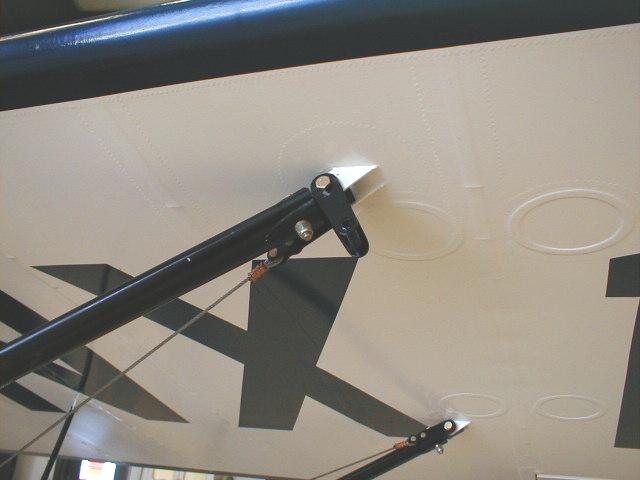 Wing tiedowns made from simple straps at the wing strut attach points. John has made the strut attach fittings a tad longer to make it easier to get the bolts into the fittings. Fittings made exactly to Mr. Pietenpol's 1929 plans result in very tight spaces for the bolt head, washer, and nut to be installed and tightened.
Wing tiedowns made from simple straps at the wing strut attach points. John has made the strut attach fittings a tad longer to make it easier to get the bolts into the fittings. Fittings made exactly to Mr. Pietenpol's 1929 plans result in very tight spaces for the bolt head, washer, and nut to be installed and tightened.
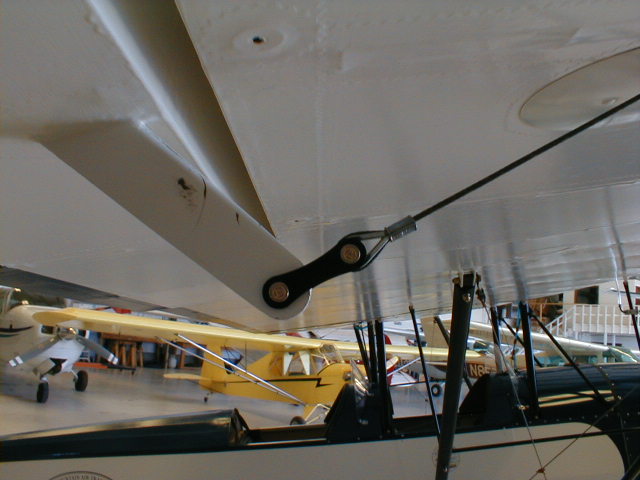 Aileron control horn, using the "motorcycle chain link" cable clevis connection. John constructed all the control horns exactly per the 1929 drawings.
Aileron control horn, using the "motorcycle chain link" cable clevis connection. John constructed all the control horns exactly per the 1929 drawings.
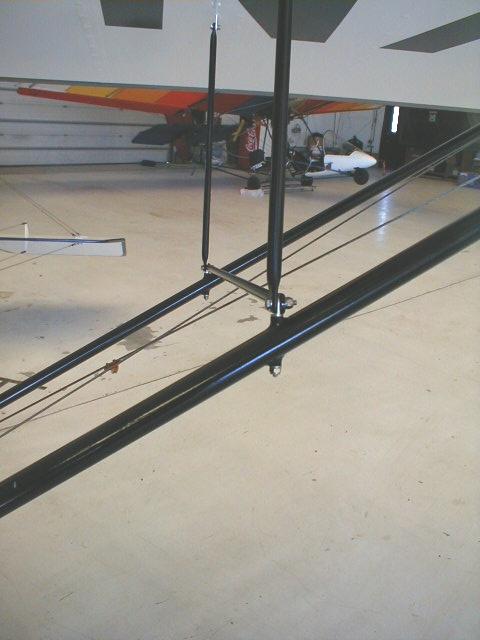 Jury struts, with a very nice connection detail at the struts. Most builders use the Adel clamp method to secure the jury struts, but John has welded in short sections of tube to provide mounting bosses, and used eyebolts as the attach points.
Jury struts, with a very nice connection detail at the struts. Most builders use the Adel clamp method to secure the jury struts, but John has welded in short sections of tube to provide mounting bosses, and used eyebolts as the attach points.
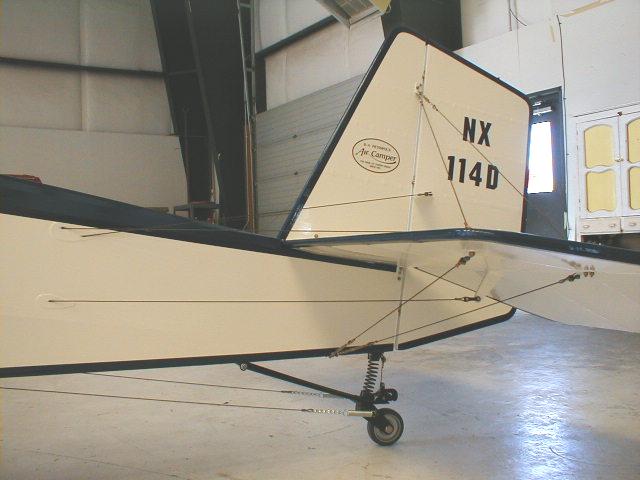 The empennage. While this looks like an ordinary Pietenpol setup, note the elevator control cable geometry. John moved the bellcrank up from the stock location in the fuselage area behind the pilot's seat, resulting in equal-length parallelogram sides (remember your high school geometry?) as the bellcrank and elevator go through their travel. What this means is that the elevator control cables retain their tension and the top cable doesn't contact the leading edge of the horizontal stabilizer when the plane is sitting on the ground and the control stick is let go. And of course this photo shows two concessions to modern construction technique: aircraft cables with Nicopress sleeves instead of wire braces with wrapped ferrules, and a tailwheel rather than a skid (but still using the fork and spring per plans).
The empennage. While this looks like an ordinary Pietenpol setup, note the elevator control cable geometry. John moved the bellcrank up from the stock location in the fuselage area behind the pilot's seat, resulting in equal-length parallelogram sides (remember your high school geometry?) as the bellcrank and elevator go through their travel. What this means is that the elevator control cables retain their tension and the top cable doesn't contact the leading edge of the horizontal stabilizer when the plane is sitting on the ground and the control stick is let go. And of course this photo shows two concessions to modern construction technique: aircraft cables with Nicopress sleeves instead of wire braces with wrapped ferrules, and a tailwheel rather than a skid (but still using the fork and spring per plans).
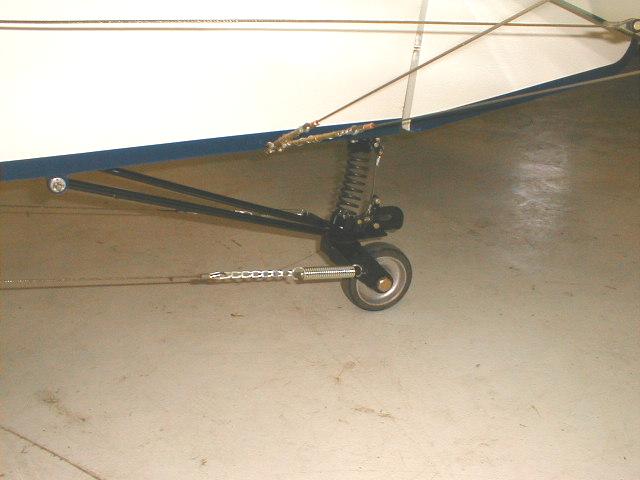 Oh, yes- about that mysterious control lever in the cockpit. It connects to a towhook at the tail. Yes, it's used for towing sailplanes aloft... but don't try this at home with your Ford 'A' Pietenpol! "Mountain Piet" is one muscular little experimental and very likely one of only a handful with the guts to tow a sailplane.
Oh, yes- about that mysterious control lever in the cockpit. It connects to a towhook at the tail. Yes, it's used for towing sailplanes aloft... but don't try this at home with your Ford 'A' Pietenpol! "Mountain Piet" is one muscular little experimental and very likely one of only a handful with the guts to tow a sailplane.